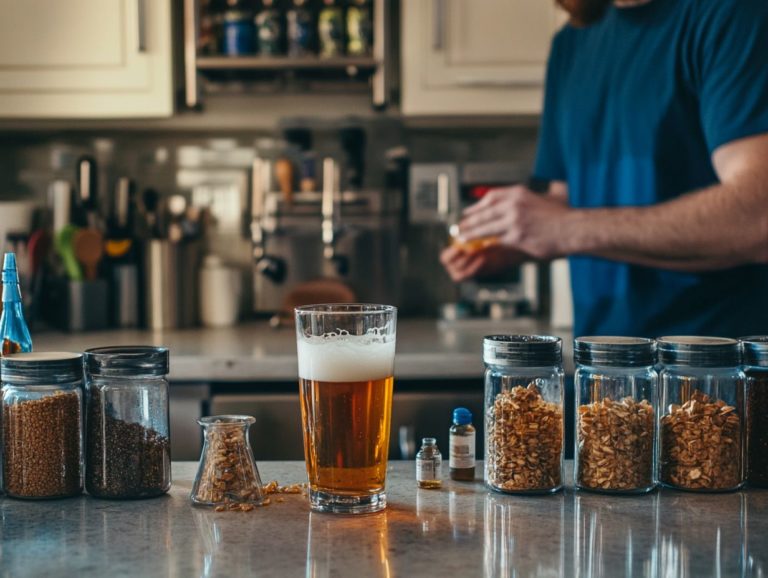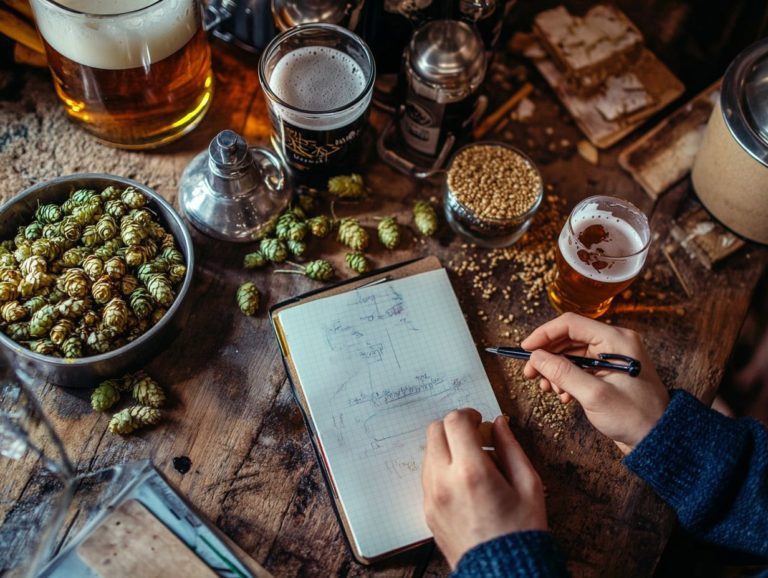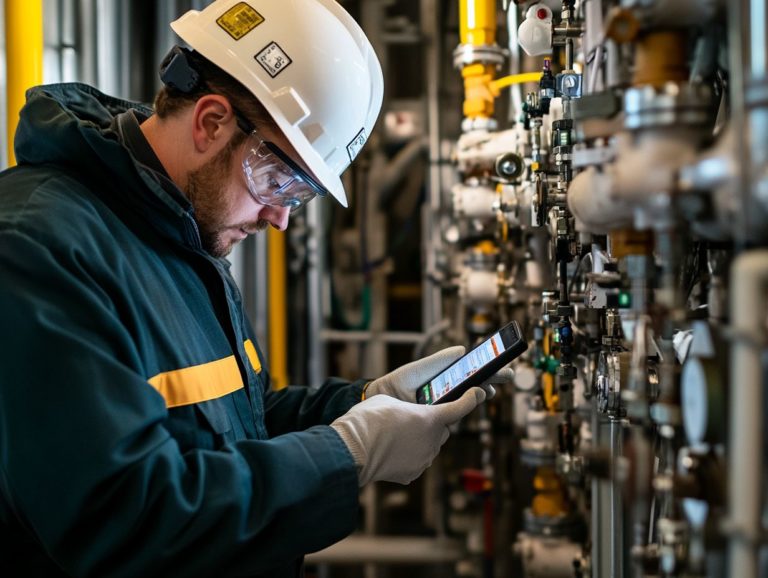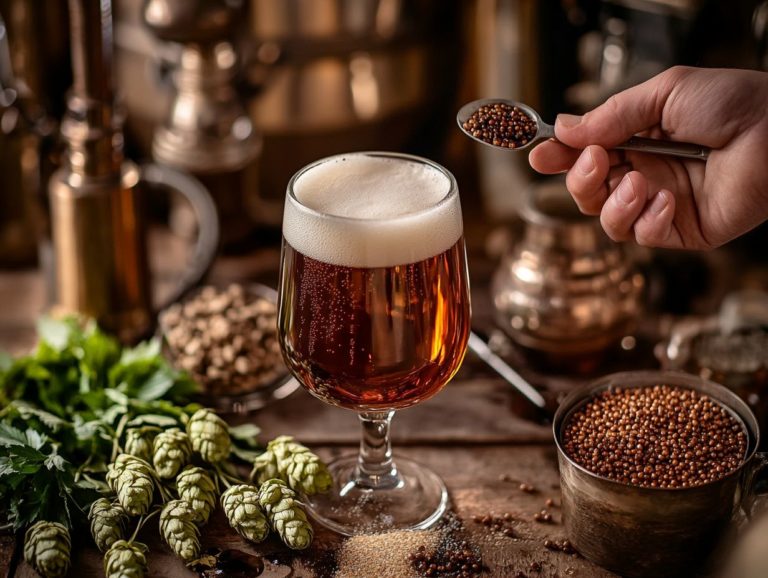Understanding and Fixing Yeast Autolysis
Discover how yeast autolysis can challenge your brewing skills and impact the flavor, carbonation, and clarity of your beer. Yeast autolysis presents a formidable challenge for brewers, significantly affecting the flavor, carbonation, and clarity of your brew. This phenomenon occurs when yeast cells die and begin to break down, releasing undesirable compounds that can compromise the quality of your beer and lead to unpleasant aromas.
In this article, you will delve into the causes of yeast autolysis, recognize its symptoms, and learn how to diagnose it effectively. We will explore its impact on beer, including various beer styles, and offer practical tips for both prevention and remedies.
Unlock the secrets to mastering yeast management and elevate your brewing game!
Contents
- Key Takeaways:
- What is Yeast Autolysis?
- What are the Symptoms of Yeast Autolysis?
- How is Yeast Autolysis Diagnosed?
- What are the Effects of Yeast Autolysis on Beer?
- Does Yeast Autolysis Affect Clarity?
- How Can You Prevent Yeast Autolysis?
- What is the Optimal Temperature for Fermentation?
- How Can You Avoid Overpitching Yeast?
- How Can You Properly Store Yeast?
- How Can You Fix Yeast Autolysis in Beer?
- What is Racking and How Can it Help?
- What is Yeast Harvesting and How Can it Help?
- What is Cold Crashing and How Can it Help?
Key Takeaways:
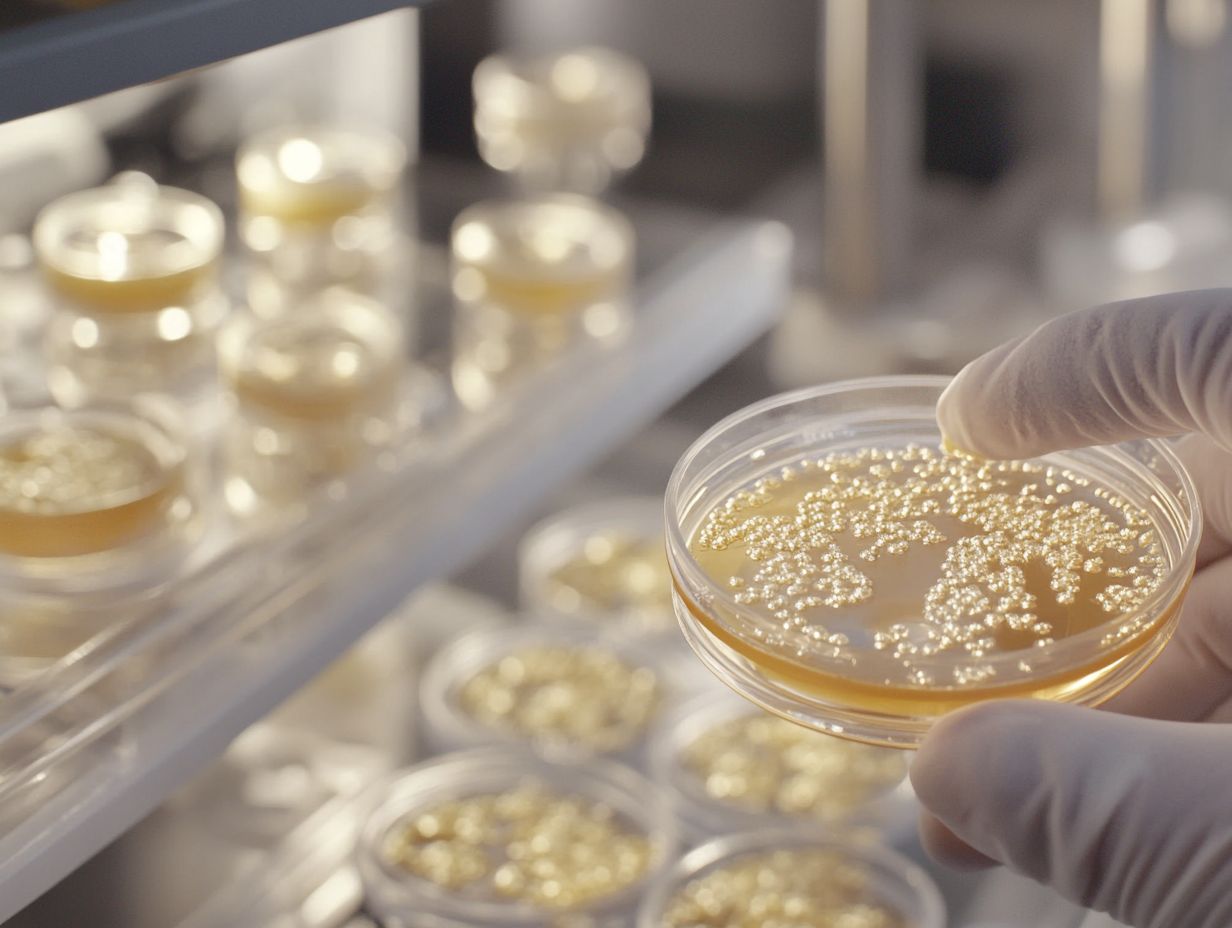
- Yeast autolysis can lead to off-flavors, flatness, and haziness in beer.
- To prevent yeast autolysis, maintain optimal fermentation temperature, avoid overpitching yeast, and implement proper storage techniques for yeast.
- To fix yeast autolysis, consider racking, yeast harvesting, cold crashing, or filtering your beer.
What is Yeast Autolysis?
Yeast autolysis is an important process in the brewing industry that significantly impacts the quality of your beer. This intriguing phenomenon occurs when yeast cells break down after fermentation, releasing autolytic enzymes substances released by yeast that can change the flavors and aromas in your beer and compounds that can dramatically transform the flavor and aroma profiles of your finished product, leading to undesirable flavors and aromas.
Understanding yeast autolysis is crucial to mastering your brewing craft. It helps you manage fermentation conditions effectively and uphold the high quality of your beer. If left unchecked, this process can result in undesirable off-flavors. Therefore, it’s essential to monitor it closely and implement effective brewing techniques.
You’ll find that factors such as temperature, pH levels, and the health of your yeast strains during the brewing process are vital to navigating this complex biochemical landscape. Monitoring these factors ensures the stability of your product.
What Causes Yeast Autolysis?
Yeast autolysis occurs primarily due to the breakdown of yeast cells after fermentation, typically at the end of their growth phase, when specific conditions are present. Several key factors influence this process, with fermentation temperature and pH levels being particularly significant.
Warmer temperatures can ramp up yeast s metabolic activities. However, if they exceed optimal levels, they may introduce cell stress that leads to autolysis. Likewise, pH levels are critical; if conditions are too acidic or too alkaline, yeast cells can weaken, making them more prone to breakdown. Monitoring these conditions closely is essential for effective control.
The initial health of the yeast cells, influenced by nutrition and the vigor of the selected yeast strain, greatly impacts their resilience throughout fermentation. Understanding these elements is crucial for brewers who aim to optimize flavor retention while minimizing any off-flavors that autolysis might introduce. Adequate nutrients play a key role in maintaining yeast health and preventing undesirable outcomes.
What are the Symptoms of Yeast Autolysis?
Identifying the symptoms of yeast autolysis is essential for brewers striving to uphold the quality of their beer. This phenomenon can lead to a range of undesirable flavors and aromas that can seriously detract from the overall drinking experience. Thus, recognizing early signs and taking corrective measures is crucial.
When yeast cells die and break down, you might encounter off-flavors that evoke unpleasant memories of rubber, cabbage, or even rotten eggs. Such unappealing characteristics often accompany a change in aroma, where once-inviting fruity notes give way to a foul or musty scent. These undesirable indicators highlight the need for effective yeast management.
Sedimentation occurs as the breakdown products settle at the bottom of your fermentation vessels, negatively impacting the beer’s clarity and mouthfeel. Each of these indicators can profoundly affect your brewing process, compelling you to make necessary adjustments or, in the worst-case scenario, discard an entire batch. This ultimately influences the quality and reputation of your craft. Proper monitoring and control techniques can help mitigate these risks.
How is Yeast Autolysis Diagnosed?
Diagnosing yeast autolysis requires blending sensory evaluation with scientific testing. This combination ensures a comprehensive understanding of the brewing process.
Skilled tasters often detect off-flavors linked to yeast autolysis, such as roasted coffee or a meaty character. This evaluation connects brewing intuition with consumers’ sensory experiences.
In the laboratory, testing for volatile compounds substances that easily evaporate and can affect the beer’s aroma like dimethyl sulfide (DMS) or hydrogen sulfide (H2S) becomes crucial for quantifying yeast health. These compounds can signal yeast stress or breakdown, resulting in inconsistent beer quality.
By combining sensory assessments with precise laboratory methods, you can effectively diagnose yeast autolysis. This ensures you produce high-quality beer every time.
What are the Effects of Yeast Autolysis on Beer?
The effects of yeast autolysis on your beer are intricate and can lead to notable changes in its quality, flavor, and overall stability. Recognizing yeast autolysis is critical because it directly affects your beer’s quality!
When yeast cells undergo autolysis, they release a range of undesirable aromas and flavors that can negatively impact your brew’s sensory profile. Monitoring these changes helps manage the overall brewing process effectively.
These changes can manifest subtly or be quite pronounced. Factors such as fermentation conditions, specific yeast strains, and the duration of the autolysis process play significant roles. Understanding these effects is vital for crafting high-quality beer with the desired characteristics.
Does Yeast Autolysis Affect Flavor?
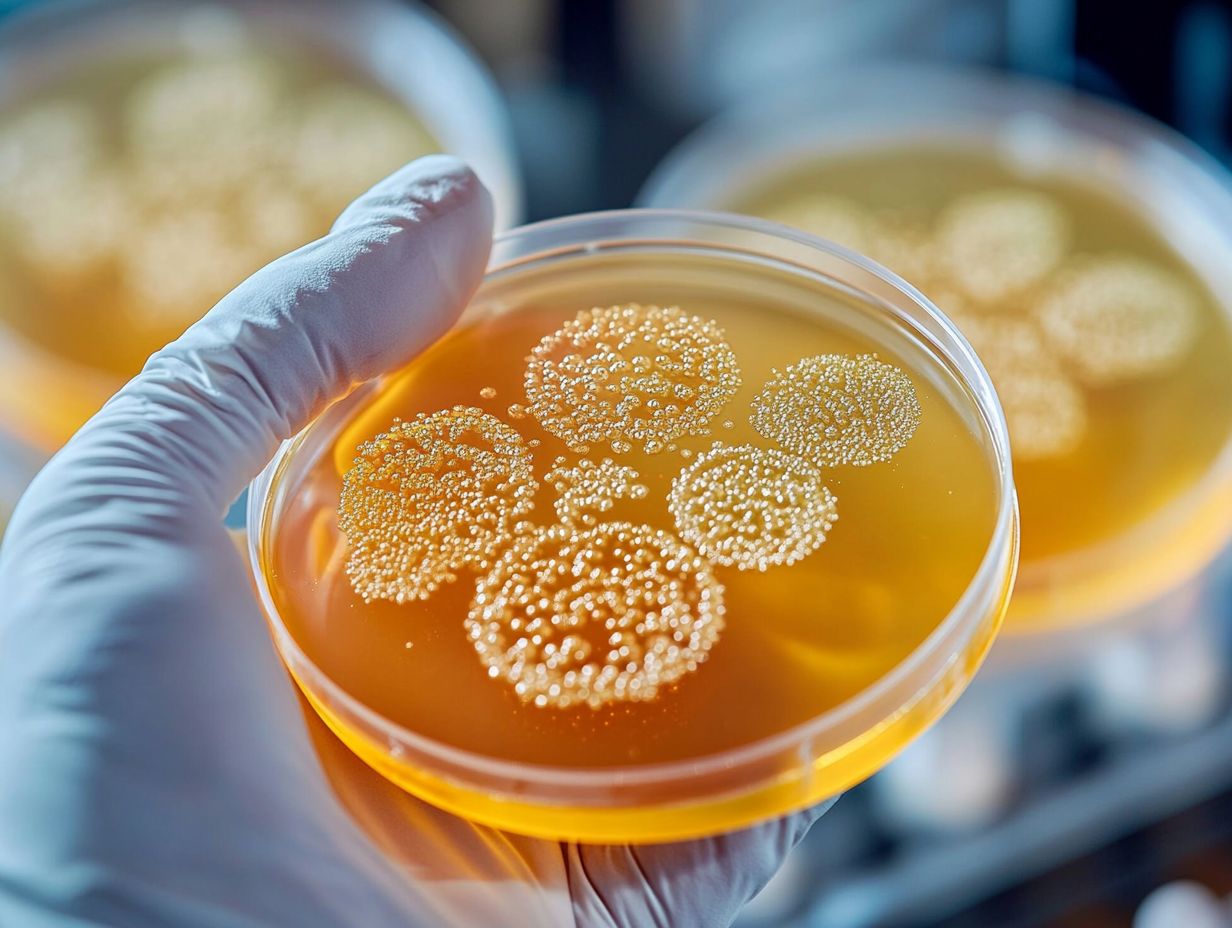
Yes, yeast autolysis profoundly impacts beer flavor, often introducing undesirable notes that compromise both quality and your drinking experience. Effective management of fermentation conditions can help mitigate these effects.
This phenomenon occurs when yeast cells die and begin to break down. They release a variety of compounds, including sulfur compounds, particularly hydrogen sulfide, which can produce a distinct ‘rotten egg’ aroma, rendering the beer far from enjoyable.
Moreover, the breakdown releases amino acids and fatty acids, leading to off-flavors like rubbery or meaty notes that are undesirable. These characteristics can overshadow the intended flavor profile, masking the complex tastes that brewers meticulously strive to achieve.
For those who appreciate the craft of brewing, understanding yeast autolysis’s intricacies is essential for maintaining the highest standards of beer quality and achieving desirable characteristics in the final product.
Does Yeast Autolysis Affect Carbonation?
Yeast autolysis can significantly impact your beer’s carbonation, primarily due to changes in yeast health and fermentation dynamics during this natural process. As dead yeast cells break down, they release various compounds that alter the sensory profile of your final product, including volatile compounds.
When your yeast thrives, it typically leads to more consistent fermentation, directly influencing carbonation levels. However, premature autolysis may reduce carbon dioxide production, leaving your beer flat or inconsistently carbonated.
In contrast, healthy yeast strains not only ensure adequate carbonation but also enhance stability and bubble retention over time. Proper fermentation temperature control is key to achieving this balance.
This underscores the importance of closely monitoring yeast health. By doing so, you can optimize both flavor and mouthfeel through effective carbonation management, elevating your brewing game to new heights.
Does Yeast Autolysis Affect Clarity?
Yes, yeast autolysis can indeed affect the clarity of beer. It often results in increased sediment and cloudiness that diminish its visual allure.
This process occurs when yeast cells break down and release their contents into the beer, creating a haze that many brewers find undesirable. The breakdown products, including proteins and lipids, can clump together and form particles that settle at the bottom of the fermentation vessel. This highlights the importance of effective yeast management.
Not only does this compromise the beer s appearance, but it can also lead to off-flavors. These flavors manifest as meaty or broth-like tastes that can overshadow the carefully crafted flavor profile intended by the brewer. Understanding these risks is crucial for brewing success!
Grasping the mechanics behind yeast autolysis is essential for any brewer who aspires to produce a clean and visually appealing final product. This ultimately enhances the experience for discerning beer enthusiasts.
How Can You Prevent Yeast Autolysis?
To prevent yeast autolysis, prioritize the quality and stability of your beer. Achieving this requires meticulous management of fermentation temperature, precise yeast pitching rates, and proper storage techniques.
Implementing effective prevention techniques helps maintain the health of your yeast strains and the overall quality of your beer. By paying attention to these critical factors, you can ensure that your brew maintains its exceptional character and avoids the pitfalls associated with yeast autolysis.
What is the Optimal Temperature for Fermentation?
The optimal fermentation temperature plays a pivotal role in preventing yeast autolysis, directly impacting yeast health, fermentation rates, and ultimately, the quality of your beer. Controlling this parameter is crucial for successful yeast management.
Each yeast strain has its own specific temperature range in which it thrives. For instance, lager strains (commonly used in Br u Supply systems) generally excel between 45 F and 55 F. In contrast, ale strains flourish in warmer environments, typically between 60 F and 75 F (ideal for various beer styles).
By operating within these ideal ranges, you enable the yeast to efficiently convert sugars into alcohol and carbon dioxide. This significantly influences flavor profiles and desired aromas.
Straying from these temperatures can result in sluggish fermentation or, conversely, an excessively rapid process that may introduce off-flavors. Excessive heat can put undue stress on the yeast, raising the likelihood of autolysis (the breakdown of yeast cells). When yeast cells break down, they release undesirable compounds that can jeopardize the overall integrity of your final brew. This underscores the importance of temperature control (monitoring fermentation temperature) in the fermentation process.
How Can You Avoid Overpitching Yeast?
Avoiding overpitching yeast (excessive yeast growth) is crucial for maintaining a healthy fermentation process. Excessive yeast cell concentrations can heighten the risk of autolysis during brewing.
This phenomenon occurs when yeast cells become overcrowded, leading to their demise and subsequent breakdown. This breakdown releases off-flavors that can detrimentally impact the final product. Overpitching can also create imbalances in fermentation by overwhelming the available nutrients and inhibiting proper yeast behavior. This may result in sluggish or even stuck fermentation.
To effectively manage yeast pitching rates, consider the specific gravity of the wort and the characteristics of the yeast strain. Utilizing methods such as calculating the appropriate number of cells needed based on the wort’s volume and gravity can help you achieve a well-balanced yeast population. This fosters optimal fermentation while minimizing the risks associated with overpitching.
How Can You Properly Store Yeast?
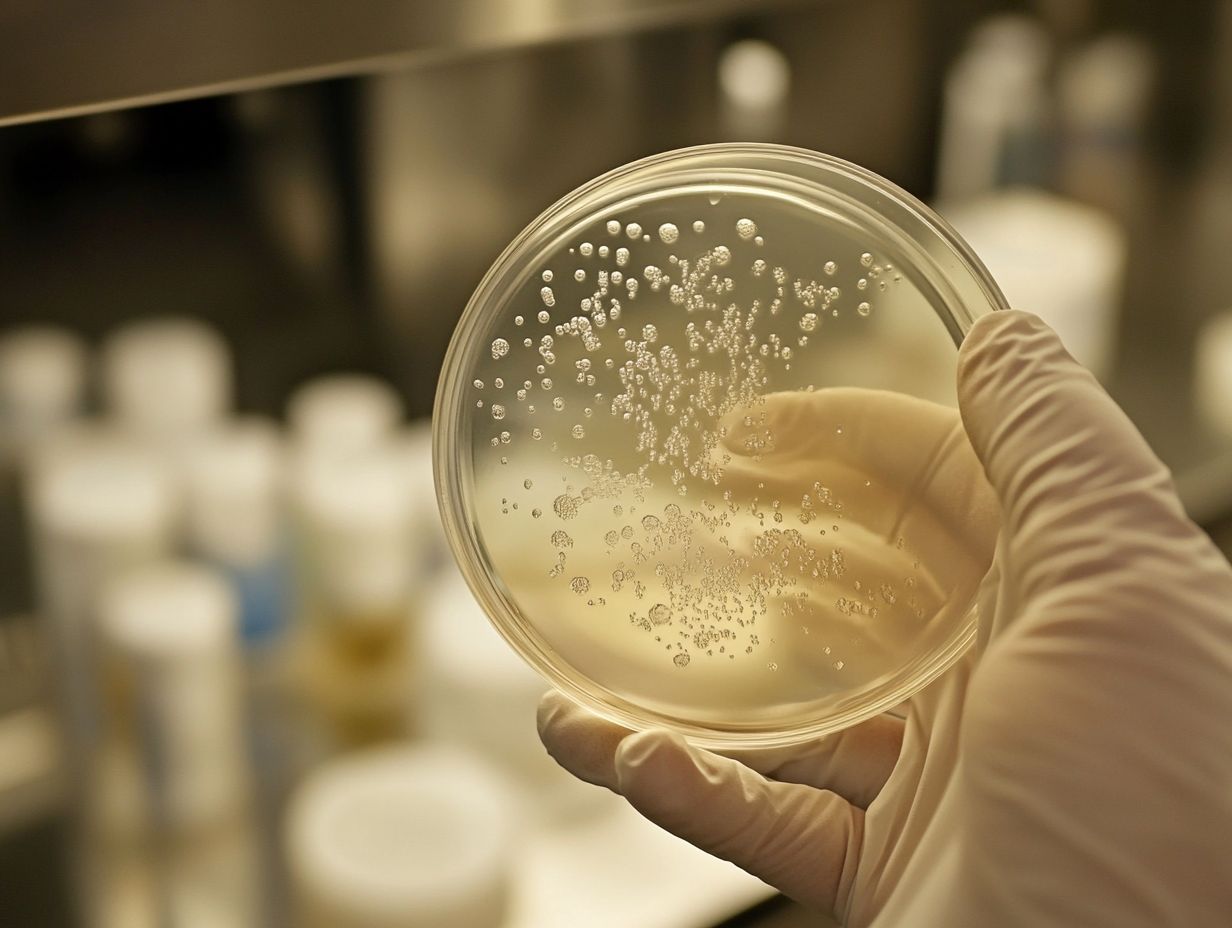
Properly storing yeast is essential in your brewing process. It helps maintain its viability and growth while preventing autolysis, ensuring the quality of your future beer batches.
For successful yeast management, temperature control is crucial. Keeping your yeast at cold temperatures ideally between 32 F and 36 F (0 C to 2 C) can significantly extend its lifespan. It is also important to limit exposure to oxygen, as this can introduce off-flavors and spoilage. To achieve this, you ll want to use airtight containers (to manage oxygen exposure) and minimize headspace.
Regarding storage duration, liquid yeasts should not be stored for more than several weeks, while dry yeast can last for months if kept sealed and refrigerated. By following these storage techniques, you can preserve yeast health and enhance the final taste profile and desirable characteristics of your exquisite brews.
How Can You Fix Yeast Autolysis in Beer?
Addressing yeast autolysis in your beer can present a challenge, but employing effective techniques such as racking (an important brewing method), yeast harvesting, cold crashing, and filtering can significantly mitigate its effects.
By mastering these methods, you can enhance the quality of your final product and ensure a more refined brewing experience.
What is Racking and How Can it Help?
Racking is an important brewing method that involves transferring beer from one vessel to another. This expertly minimizes the impact of yeast autolysis by reducing contact with sediment and enhancing clarity.
This process is essential for keeping your beer tasting great! Prolonged contact with dead yeast cells can lead to undesirable off-flavors and an unsightly haze. By skillfully siphoning off the beer while leaving the sediment behind, you can significantly elevate the taste and visual appeal of your brew. Racking allows for the separation of unwanted byproducts that may develop during fermentation, ultimately improving the final product.
Using this technique results in a cleaner brew and stable beer quality. It also enhances the stability of the beer over time, making it a cherished practice among both novice and seasoned brewers alike.
What is Yeast Harvesting and How Can it Help?
Yeast harvesting involves collecting and reusing yeast from previous batches. This practice prevents yeast autolysis and preserves the quality of your new brews.
This technique enhances the efficiency of your brewing operations while ensuring that the flavor profiles, drinking experience, and aromas remain consistent across batches. By diligently managing yeast cells, you can mitigate the deterioration that occurs when yeast breaks down too soon, thereby safeguarding the delicate balance of compounds crucial for fermentation.
Reusing healthy yeast not only shortens fermentation times but also cuts costs, reducing the need to purchase fresh yeast for every new brew. When executed properly, your harvesting processes will cultivate a robust yeast population that thrives in nutrient-rich environments, ultimately promoting optimal fermentation health and resulting in a superior final product.
What is Cold Crashing and How Can it Help?
Cold crashing is a technique you can employ in brewing to swiftly lower the temperature of your beer. This not only helps settle yeast and other particulates but also minimizes the effects of yeast autolysis, ultimately improving the clarity of your brew.
This process typically takes place after fermentation has concluded. You bring the beer down to around 32 F (0 C) to 36 F (2 C). By doing this, you encourage the yeast and sediment to clump together and settle at the bottom of the fermenter. The result? A visually stunning, crystal-clear brew that also preserves the taste and aroma you ve worked hard to develop.
Lowering the fermentation temperature significantly slows down yeast metabolism and undesirable flavors, reducing off-flavors and any unwanted aromas that might detract from your masterpiece. In essence, cold crashing is a crucial step in your brewing journey, elevating the quality of your beer and allowing its intended flavors to shine through while minimizing imperfections.
What is Filtering and How Can it Help?
Filtering is an essential method in the brewing process that helps you remove unwanted particles, including yeast remnants. This practice alleviates the negative impacts of yeast autolysis. This practice enhances the clarity of your beer.
Not only does this crucial step improve the visual appeal of your brew, but it also plays a significant role in preserving its flavor profile. By meticulously filtering out these unwanted solids, you ensure that your final product boasts a bright, clean appearance. It also provides improved taste experience, a smooth mouthfeel, and minimal undesirable aromas. This process dramatically reduces the risk of off-flavors that can arise from yeast autolysis, which is the breakdown of dead yeast cells that decompose and release undesirable compounds into the mix.
Ultimately, implementing a thorough filtering process offers substantial advantages in crafting a high-quality brew with excellent flavors that is both visually stunning and delightful to enjoy.
Frequently Asked Questions

What is yeast autolysis?
(a brewing process indicator)
Yeast autolysis is a process where yeast cells break down and release enzymes and other byproducts into the beer. This results in off-flavors, haze, and reduced shelf life. This process affects beer quality and can compromise your overall brewing experience.
Why does yeast autolysis occur?
(understanding the conditions)
Yeast autolysis can occur due to various factors such as high temperatures, low pH levels, long periods of storage, and poor yeast health. Monitoring fermentation conditions is essential to prevent these issues.
How can I prevent yeast autolysis?
(effective management techniques)
To prevent yeast autolysis, it is important to maintain proper fermentation temperatures and pH levels. Use fresh and healthy yeast, and remove the yeast from the beer before it reaches the end of its lifespan. Implementing effective storage techniques and managing pH levels can significantly reduce the risk.
What are the signs of yeast autolysis in beer?
(key indicators)
Signs of yeast autolysis in beer include a sulfur-like or rubbery aroma, a metallic or bitter taste, and a hazy or cloudy appearance. These indicators suggest poor beer quality.
Can yeast autolysis be fixed?
(using proper techniques)
In some cases, yeast autolysis can be fixed by removing the yeast from the beer and cold crashing the beer to settle out any remaining yeast particles. However, prevention and proper management are the best methods to avoid yeast autolysis and ensure beer quality.
How can I learn more about yeast autolysis?
(enhancing your knowledge)
Dive deeper into yeast autolysis by chatting with experienced brewers and diving into workshops! You can also consult reference materials and online resources to further your understanding. Active monitoring and control of fermentation conditions are crucial in this regard.
Remember: Understanding yeast autolysis is vital for brewing quality beer. Keep an eye on your fermentation conditions!

